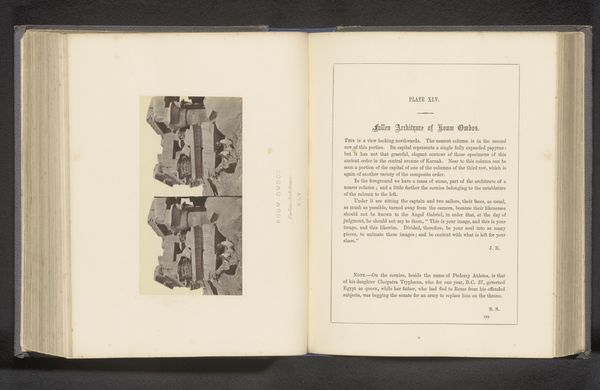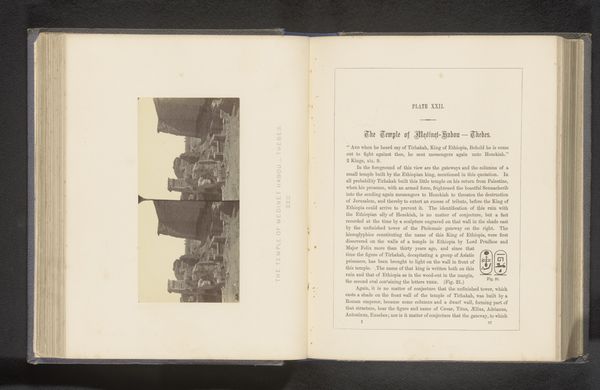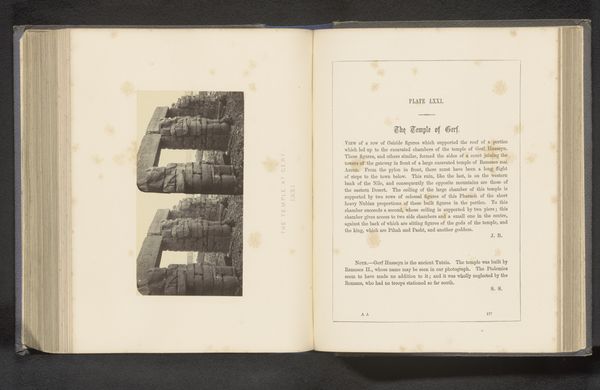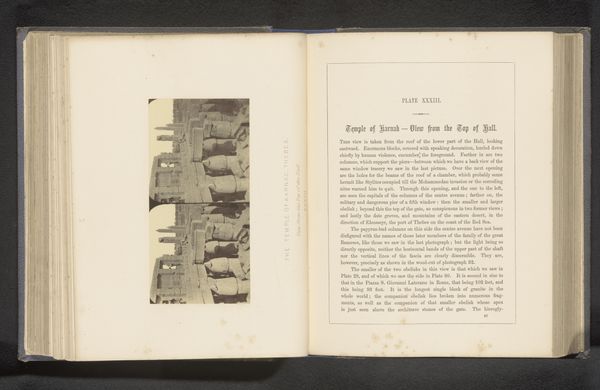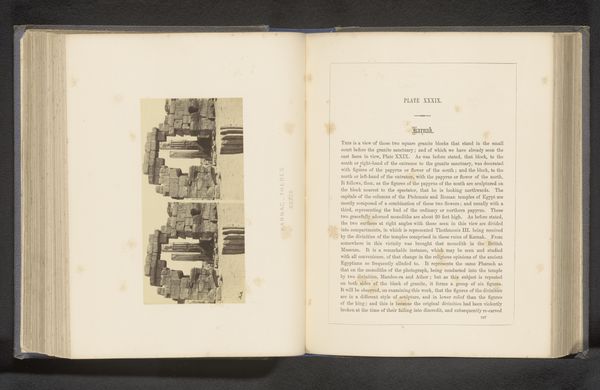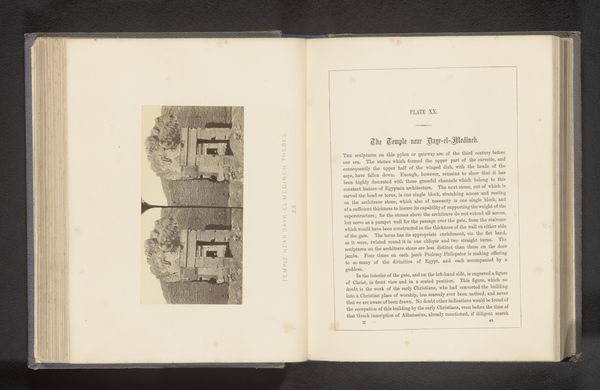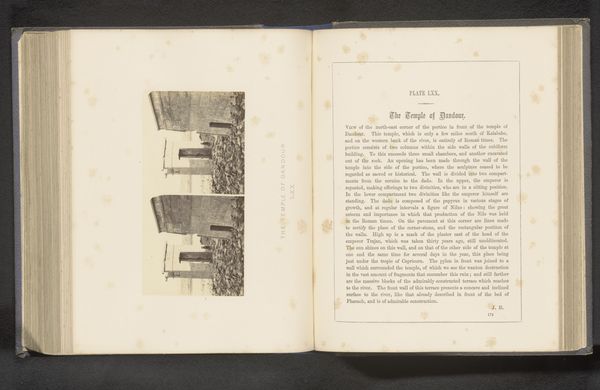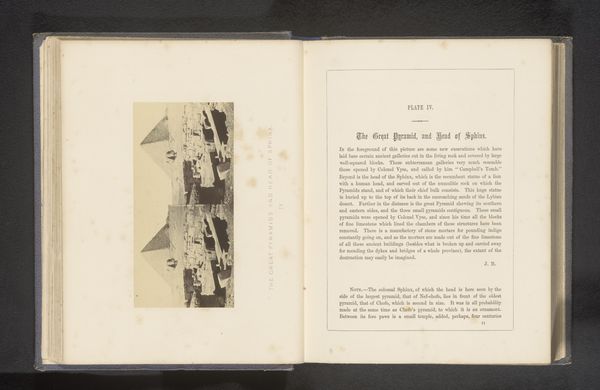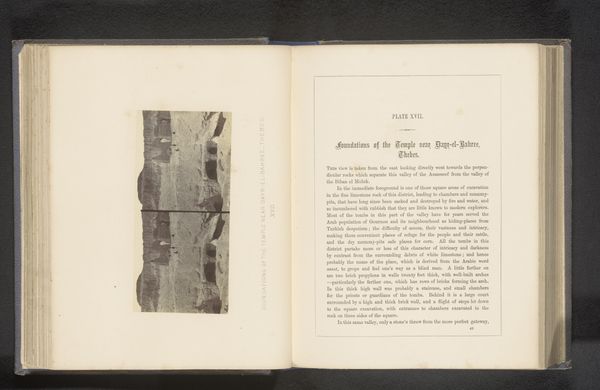
print, photography
# print
#
landscape
#
ancient-egyptian-art
#
photography
#
geometric
#
ancient-mediterranean
#
column
Dimensions: height 72 mm, width 139 mm
Copyright: Rijks Museum: Open Domain
Curator: Here we have a photograph entitled "Pilaren van het tempelcomplex te Karnak," or "Columns of the Karnak Temple Complex," taken by Francis Frith before 1862. It's currently held in the Rijksmuseum. Editor: My first impression is of overwhelming verticality. The sheer height implied by the cropped columns conveys a sense of awe and, perhaps, the weight of history bearing down. Curator: Precisely. The Temple of Karnak was not simply a religious structure but a monumental assertion of pharaonic power, a landscape deliberately crafted to impress upon the individual the immensity and might of the gods and rulers. These columns aren't just supports; they are laden with symbolism. Editor: I'm drawn to the geometry of the forms. The repetitive, rectangular shapes of the stones, stacked and receding, create a powerful rhythm. And the photographer's choice to focus so tightly on the pillars abstracts them, emphasizing their architectural essence. Curator: Indeed. Those repetitive geometric forms themselves echo a grander cyclical narrative, representative of earthly stability but, moreover, aligned with more complex cycles of Egyptian spiritual beliefs. Consider, also, the sun's influence: Light and shadow dance across the carved surfaces, an ephemeral spectacle, imbuing stone with an air of lively metamorphosis. Editor: The play of light also contributes significantly to the sense of scale. The highlights suggest texture, a kind of rough materiality that contrasts beautifully with the abstract geometric arrangement. It gives the monument a tangible presence. Curator: These towering architectural components stand as reminders that symbols persist over time, subtly altering perceptions, reminding one of our forebears' dedication to crafting tangible images of continuity. They aimed for immortality, both literal and metaphorical. Editor: This close examination offers a new appreciation for the photograph as an artistic and documentary record. Beyond just capturing the architectural forms, the photo makes me contemplate light and dark as components of perception, adding an aura of sacred permanence to these stone ruins.
Comments
No comments
Be the first to comment and join the conversation on the ultimate creative platform.
